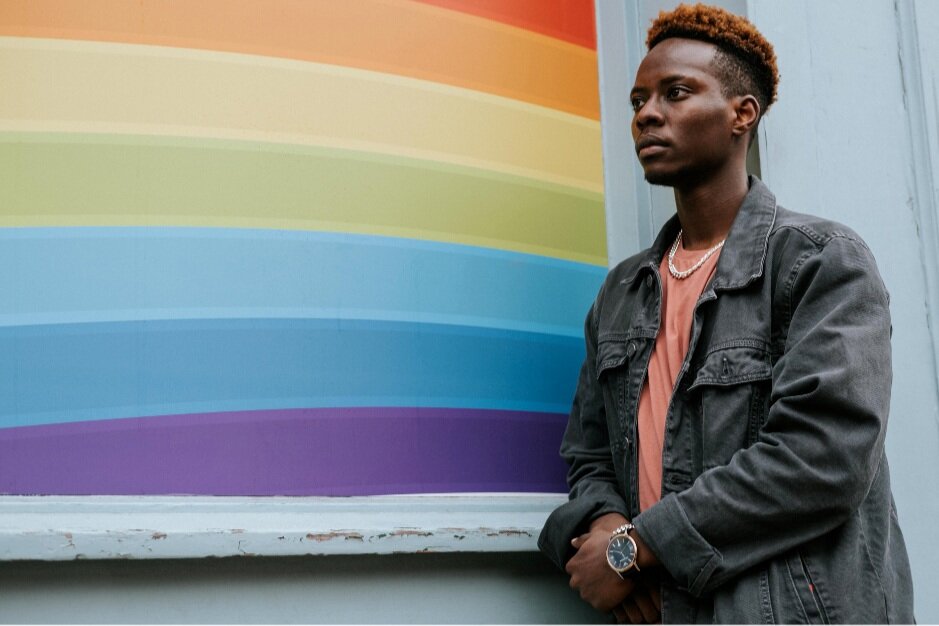In our previous post, we briefly explored the nuances on the feminine side of the gender spectrum and the unique challenges facing those whose identities reside there, and today we slide on down to the masculine side. People may not typically think of men when they picture bisexuality, which may be due to stereotypes and media portrayals of sexual fluidity revolving primarily around women, but it is true that bisexuality swings both ways (get it?).
Okay, apologies for the bad binary pun, but indeed men can be bisexual as well! Bisexuality is, generally speaking, the potential for sexual and/or romantic attraction and involvement with multiple genders. Normally, people may say, “men and women” rather than “multiple genders,” but it is important that we acknowledge the possibility and reality of genders that do not fit neatly in those categories as easily as others. Another reason it is important to include multiple genders is that the one question I used to get a lot when I worked at my university’s LGBTQ+ Resource Center was, “What is the difference between bisexual and pansexual?” The short answer is, there is a lack of consensus on whether there truly is a difference amongst those who identify as either or both, but one school of thought maintains that bisexuality is the attraction to multiple genders while pansexuality is the attraction to all genders.
Gay men—men who are primarily attracted to and/or romantically involved with other men—and bisexual men alike deal with a sticky stigma if their sexualities or gender expressions ever deviate from the masculine and heterosexual, and said stigma frequently rears its ugly head in the workplace. As previously discussed, about half—and in some studies, most—of LGBTQIA+ people are not out at work, although generally it is beneficial to be out at work. Unfortunately for bisexual or gay men, it seems to be a no-win scenario: recent research reveals that when men are openly gay or bisexual at work, they face even more stress and discrimination than before they came out. Men in Western culture, just like women, inherit certain messages and expectations about acceptable ways to express themselves and who to date, and while some men feel completely comfortable with those when said expectations incidentally align with who they actually are, plenty of men simply do not align with those expectations. That can be hard to empathize with by those of us who mistake cultural expectations for default dispositions, which is very likely the reason LGBTQIA+ men struggle with inclusion in this context.
Our internal prejudice barometers are only as keen as our experiences being on the receiving end of harmful and inaccurate epithets, jokes, presumptions, and discrimination. Such is why it can be difficult to spot homophobia or biphobia in our daily environments, but the good news is that there are things we can do as leaders to become more aware of our surroundings and hone our empathy skills for the benefit of the team. As leaders, we can support our gay and bisexual teammates by first recognizing the language used in regular team interactions. Is there a shortage of explicit inclusivity for bisexual members in HR strategies, as in using “gay” as a catch-all or shorthand for coverage and support? Are bisexual people included in the conversation about policy and procedure review, especially when it comes to harassment at work? Are there common assumptions of someone’s sexuality based on the sex or gender of their partner at the time (i.e., assuming that a man with a husband or boyfriend must be gay)?
Ensuring that bisexuality is not merely implied but directly acknowledged and invited in networking and mentorship opportunities, organizational review consultations, employee engagement, and career development goes a long way. Standing up as a visible ally to suggest these changes, address internal biases, and challenge stigmatizing jokes or comments whenever they pop up goes even longer. Our sexually fluid teammates deserve better, so let’s be trailblazers and set the tone like the leaders we are!

View comments
+ Leave a comment